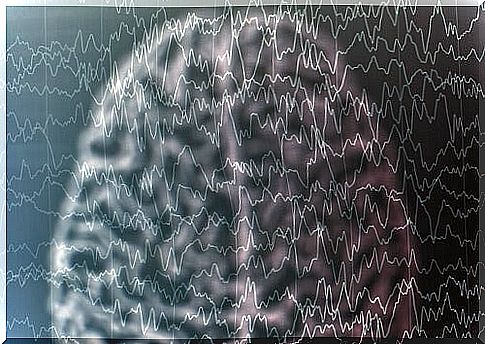What Is Lennox-Gastaut Syndrome?

Lennox-Gastaut syndrome represents between 3 and 6 percent of children who suffer from epilepsy, being more frequent in boys than in girls. It usually begins between 3 and 5 years and in almost half of the cases it is of unknown cause. Clinically, in addition to epileptic seizures, cognitive impairment and a slow spike-wave pattern often appear. In practically all cases, cognitive deterioration is progressive.
Those affected show learning difficulties, memory loss and psychomotor disorders. Half of those who reach adulthood do so with a severe disability and only a very small percentage of those who suffer from it can fend for themselves. Lennox-Gastaut syndrome is accompanied by mental retardation in all diagnosed cases.
About 5% of patients with Lennox-Gastaut syndrome die from this disorder or its associated problems before the disease has lasted for more than 10 years. Often the disorder lasts through adolescence and adulthood, causing multiple emotional problems and disabilities, so current treatments are focused on improving the quality of life of patients.
Diagnostic criteria for Lennox-Gastaut syndrome
According to the Spanish Federation of Rare Diseases (FEDER), the diagnostic criteria for this syndrome are the following:
- The age of onset ranges from the first year of life to eight years.
- Presence of at least two or more types of generalized seizures: tonic, atypical absences or atonic seizures.
- Progressive mental decline.
- Electroencephalographic criteria. In this criterion there are two important points. On the one hand, there is an abnormal slowing of the base rhythm interrupted by slow spike-wave complexes during wakefulness. On the other hand, the presence of bursts of rapid paroxysmal discharges during sleep stands out.
Main symptoms of Lennox-Gastaut syndrome
Lennox-Gastaut syndrome is a severe type of childhood epilepsy with impaired intellectual abilities and developmental problems. Seizures usually start before age 4. The types of seizures suffered by those who suffer from it vary, but seizures are common:
- Tonic : stiffness of the body, deviation of the eyes and dilation of the pupils with altered breathing patterns.
- Atonic : brief loss of muscle tone and consciousness causing abrupt falls, which can be dangerous as they are sudden and could cause injury.
- Atypical absence : periods in which they are absent and stare at a fixed point without responding to external stimuli.
- Myoclonus : sudden muscle jerks.

There may be periods in which seizures are frequent and short periods of time in which epileptic seizures do not appear. Most children with Lennox-Gastaut syndrome experience some degree of impaired intellectual functioning or information processing along with developmental delay and behavioral disorders.
Problems associated with the disease
This syndrome is usually associated with serious behavioral disorders such as:
- Hyperactivity
- Aggressiveness.
- Autistic tendencies.
- Personality disorders.
- Frequent psychotic symptoms.
Complications in the health of those who suffer from this syndrome also include neurological disorders such as tetraparesis, hemiplegia, extrapyramidal disorders and delayed motor evolution. An earlier onset is possible, and it is then impossible to determine whether the Lennox-Gastaut syndrome is the continuation without transition of a West syndrome. However, the syndrome can appear in the second half of childhood, adolescence, and even adults.
Patients may present the association of slow spike-waves on the EEG, mental retardation, difficult-to-treat seizures, and a poor response to anticonvulsant drugs. Children have a reserved prognosis with regard to their mental development and the evolution of their seizures. However, Lennox-Gastaut syndrome is not a pathological entity, since many different causes can produce it.
Causes and treatments
The most common causes of the appearance of the syndrome are:
- Genetic disruptions.
- Neurocutaneous syndromes.
- Encephalopathies after hypoxic-ischemic lesions.
- Meningitis.
- Brain malformations.
- Perinatal asphyxia.
- Severe brain injury
- Central nervous system infection.
- Hereditary degenerative or metabolic diseases.
In 30-35% of cases , the causes of the syndrome are unknown. Treatment is very difficult, being Lennox-Gastaut syndrome very refractory to conventional therapy. The drugs of first choice are valproate and benzodiazepines (clonazepam, nitrazepam and clobazam) and one or the other is prescribed according to the most frequent types of seizures.
Normally, the medication intended to reduce or cushion the symptoms is not a single drug, but the use of several at the same time such as lamotriginia, valproate or topiramate. There are children in whom an improvement is observed, but they usually show tolerance to the drug over time, such that the seizures uncontrollable by the treatment that before did control them at least in part.
Treatment for the syndrome is lifelong, as there is no cure. The main objective is to improve the quality of life by reducing the frequency of seizures, although total remission is not possible. In addition to drugs, there are other treatments such as the ketogenic diet, vagus nerve stimulation, and surgical treatment.
Currently there is a bleak long-term prognosis, with a mortality of 10% before 11 years of age. The positive part is that researchers work every day to improve this data and that advances, thanks to the parallel advance of technology, have been great in recent years.

Facts about the syndrome
All the authors agree with the particular and evocative character of the observed crises, as well as their high frequency. However, it is at the moment of specifying the types of crisis that important divergences appear. In fact, the most common is that these accesses are brief, and can even go unnoticed.
The alteration of the psyche is generally severe, both as regards intelligence and personality, it is a constant element of the picture. Mental retardation can be considered to persist or worsen in most cases. It is probable that this mental retardation is, on the one hand, related to cerebral atrophy, confirmed by gas encephalography or tomodensitometry.
On the other hand, the lack of learning seems to be related to the frequency of seizures, to the existence of lasting confusional episodes in the form of States of Evil and to the psychotic state, not to mention school exclusion and therapeutic overdose. The evaluation of the mental level is frequently affected by alterations characterized by prepsychotic or psychotic personality alterations typical of the child (infantile autism).
Bibliographic references
David, P., García, V., & Meneses, S. (2014). Lennox-Gastaur syndrome, an updated review. Chilean epilepsy journal. 3, 42-45.
Herranz JL, Casas-Fernández C, Campistol J, Campos-Castelló J, Rufo-Campos M, Torres-Falcón A, et al. (2010). Lennox-Gastaut syndrome in Spain: a retrospective and descriptive epidemiological study. Rev Neurol. 50, 711-7.
Valdivia Álvarez, C., & Marreno Martínez, P. (2012). Etiological characterization of symptomatic Lennox-Gastaut syndrome. Cuban Journal of Pediatrics. 84 (1), 22-32.









